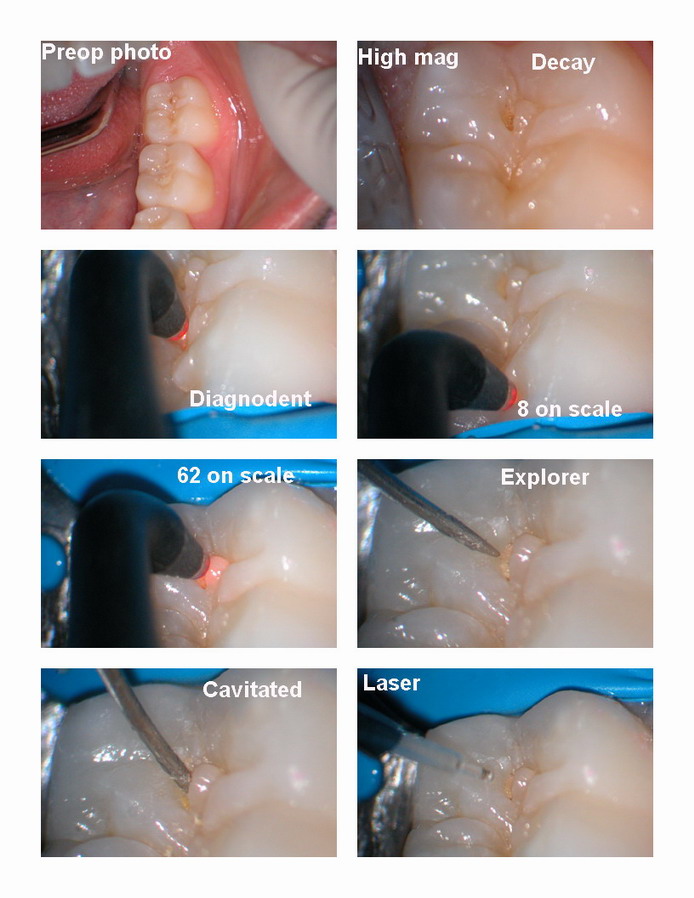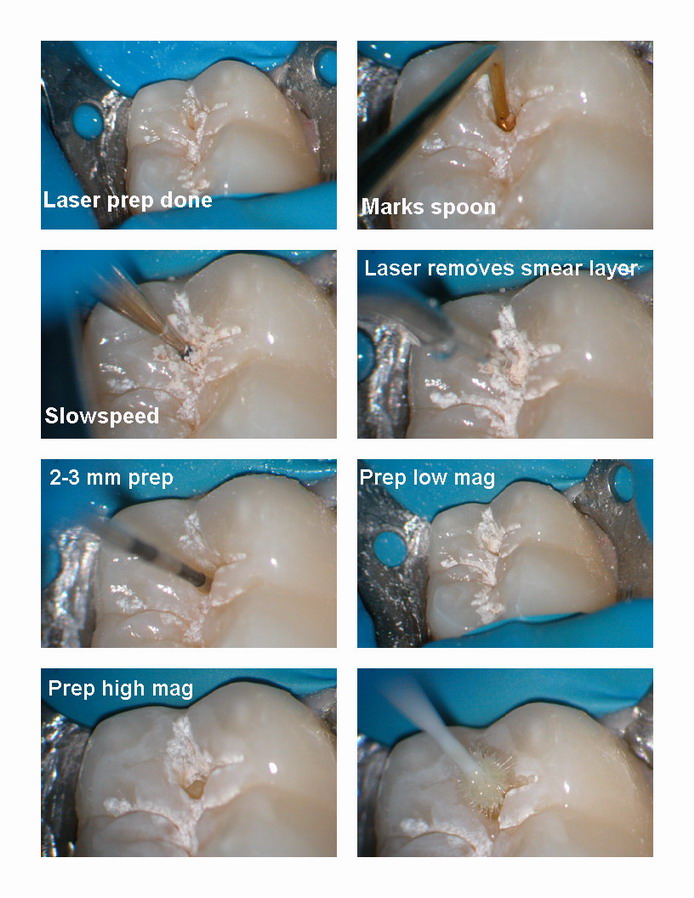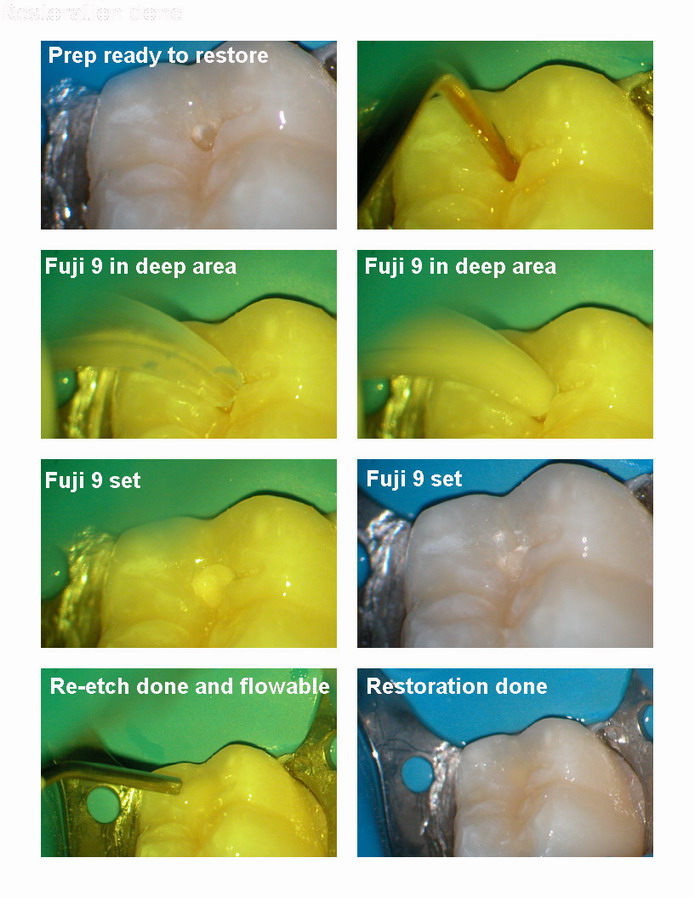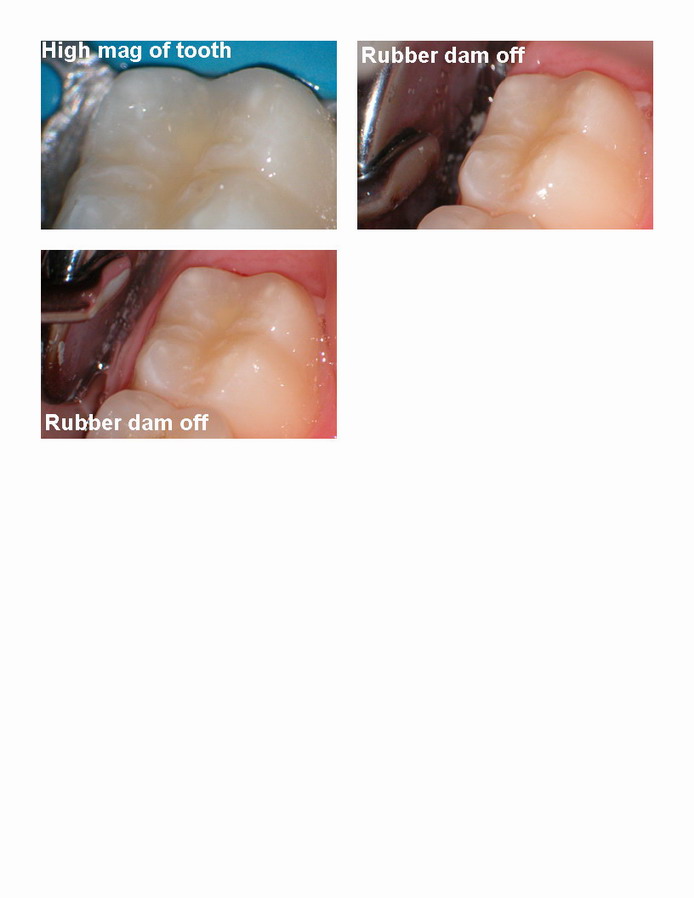Forums › Laser Treatment Tips and Techniques › Hard Tissue Procedures › Diagnosis of Occlusal caries
- This topic is empty.
-
AuthorPosts
-
marc andre gagnonSpectatorI’ve been a diagnodent user from his first appearance on the dental market.We can only use the diagnodent for occlusal caries detection.
It’s not the answer for decay diagnosis just a tool for occlusal detection .
We all know that the best technique for that kind of decay is transillumination.
Glenn van AsSpectatorHi Marc…….the best tools for decay diagnosis are high magnification so you can visually assess the decay, combined with the diagnodent and transillumination.
Glenn
Kenneth LukSpectatorHi Dave,
From what I gather, the diagnodent gives the reading of how active the lesion is.
Have you tried a ‘B’ tip for smooth surface on this area? Will it give you a different reading? I wonder.
Ken
ASISpectatorHi Guys,
Just got my Diagnodent yesterday and had it in use today on a couple of patients. Definitely a wonderful tool to confirm the diagnosis and perhaps to provide even greater credibility to the patient for the need in treatment.
Andrew
drnewittSpectatorHi Andrew
let me know how thing do with the DD. I have been using mine for almost a year now and have a pretty good feel for it. Still it takes some time to creep up the curve. I find it is similar to the RootZX in its’ learning curve. For the most part I have great success with the DD but on occasion I get thrown off. i had a case today with a small reading. 24 but you can see the dark grey shadow looming under the occlusal surface. wish I had some of Glens photo magic to show you the case but I don’t.
Glenn van AsSpectatorPaul : you are bang on……..the DD and the scope are a great team. They confirm eachother and help parents see the decay as well.
For those who are skeptical, I take alot of photos to show them what is happening… and this helps alot.
The diagnodent can really be great but again like everything else you have a learning curve and in addition you really need to watch it on new patients.
The scope really helps show the patients the decayed areas and if they doubt me , I do the worst one and show them the results.
I will post one case before I go…..
Glenn
Glenn van AsSpectatorOk here is a case where the diagnodent tipped me off and the scope confirmed a small break in the enamel….
The explorer could detect it after I saw it….
Etched whole tooth for flowable with laser and deep spot was both laser and slowspeed ( no anesthetic) and then placed Fuji 9 in deep area, and then flowable overtop.
Just wanted to show you a simple case of using both technologies and the laser as well.
I dont like to leave the rest of the tooth unetched as I have to go back a year later for another part on the fissure and dont get paid by the Dplan.
Photos help with the plan if they doubt what I am doing.
Cya
Gotta go ….I am late.
Glenn




jklineSpectatorHi Glenn,
In your set of pics I noticed that you use the laser, hand instruments, drill, and then the laser again before the tooth was ready to restore. My laser hasn’t arrived yet, so I’m wondering why you just didn’t prep the tooth with the laser only. Perhaps some of you pro’s are groaning at the simple question, but understand, I’ve never touched a laser besided my diagnodent.
Thanks,
Jeff
AnonymousGuestJeff,
Welcome to the forum!I won’t speak for Glenn but I use the spoon and handpiece for a couple reasons.
1. there is no tactile sense w/ the laser. Often when prepping w/ the laser and the infected dentin becomes hydrated it will change in color and appear that all the caries has been removed. After drying you will again see the discolored caries. The hand instruments give you a tactile feeling that all the decay has been removed.
2. often, after the caries has become really hydrated thru laser prep, it will all very simply peel out using hand instruments and save you the time of ablating it all. Order some of Mark Colonna’s instruments (click here for link) right away,you’ll find them very handy.
2thlaserSpectatorRon,
Thanks for the endorsement, it is GREATLY appreciated! I agree, the tactile sense I get using spoons is very important for me to make sure I have all the decay removed. As you know, I try very hard NEVER to use a drill…so the spoons are my anchor, next to the laser. I had one just today, that the spoons were perfect for…as I missed a bit with the laser.Thanks again!
Mark
Glenn van AsSpectatorHi Jeff: Just back from lecturing at the Academy of Microsccope Enhanced Dentistry meeting in Scottsdale so I am trying to get to the questions, while preparing for this weeks lecture in Kelowna.
Jeff as Ron mentioned the laser is a very visual technology in that you really need to SEE not FEEL how it cuts. The laser tip is 1/2-1 mm away from the tooth, is small and clear in color so it is tough to see whether you are the right distance away so I strongly suggest a pair of loupes if you dont have one. I use a scope but again loupes are mandatory in my humble opinion.
Because there is no tactile feel, and because caries detection dye gets all over and into the etched enamel surface, I dont like using it to check for complete caries removal.
In certain cases the caries actually gets so hydrated from the water spray that they color changes from orange to a much more translucent nature (you can see this at high mag) and you think all the caries is gone but it actually isnt.
To check for full caries removal you have three choices in my opinion.
1. Very high mag (10X and above ) with the Dental Operating Microscope really helps to tell whether the decay is all gone.
2. Spoons like Marks so that you can get them in there and feel whether all the decay is gone or
3. Small slowspeed rounds burs which are even better in the electric handpieces where the speed and sound can be altered or with the Root ZX someone showed is nice and can be less sensitive.
Now after I have used the last two manners I must go back in and remove the smear layer created with a light and quick laser usage to open up the tubules and then you can use your bonding technique of choice.
The laser also sterilizes so I like to use it one last time before I place my restoration.
I think that Mark and ROn (man is he getting smart) both provided you with excellent posts.
Hope that helps………
Glenn
PS congrats on the Delight laser and be prepared for a learning curve. After 2-3 weeks you wonder …..hmmmm….was my laser a good choice.
After 4-6 weeks , you say how did I ever live wihout it.
Cya
Glenn
2thlaserSpectatorGlenn is Bang On, as he says in Vancouverese! Magnification is a MUST. Bob Barr and I did our Waterlase 2 1/2 day training seminar in San Jose this past weekend…there were 10 doctors in the class, (we keep it small so more hands on with direct instruction)…over 1/2 of the class did NOT use magnification. We had Designs for Vision bring in sample loupes for them to try, and ALL of them did. Five doc’s ordered loupes, ranging from 3.5-6.0x, and headlights. They could SEE during their training, what they could do, and it MADE a BIG difference. A scope would be incredible as far as I am concerned. A big thanks to Brent Downs at DFV for supplying us with the loupes!
Glenn…one very picky, sorry, question…does the Erbium sterilize, or just disinfect it’s target tissue? I have heard it only disinfects…just wondering what the correct answer is. Maybe Ron? Bob? chime in?
BTW, Glenn and I are doing a hands on workshop together at the ALD in March on magnification and lasers. Glenn, on the scope, me on the bass, uh, I mean the loupes! I hope we can see some of you there. I am so looking forward to working with my magnification mentor, GLENN!!!
Mark
Glenn van AsSpectatorHi Mark: Congrats on your course, I am sure it was really successful and the magnification portion I am sure was absolutely invaluable.
I think that you are SPOT ON with your idea that the laser disinfects and not sterilizes……..good point.
I think that it is a better term to disinfect.
Hope that San Jose was fun………take care and continued success in all you do…….the ALD will be ALOT of fun.
Glenn
kellyjblodgettdmdSpectatorHey guys (Mark and Glenn). I’m so happy to hear that you are going to the ALD meeting in March. My twin brother (also a laser-using dentist) and I are taking our families down a week early. We’ll have to get together.
Have a great day!Kelly
ASISpectatorHi Mark, Kelly & of course Glenn, & Fellow Forum Folks,
I am looking forward to meeting you all in person as well. It is always enjoyable to talk and to get know fellow laser clinicans. We may be few in number, although growing steadily, but the care and concern that we exhibit to patients and to each other speak volume.
You’ve been posting some nice stuff, Kelly. Thanks.
Andrew
(Edited by ASI at 4:05 pm on Nov. 13, 2003)
-
AuthorPosts
